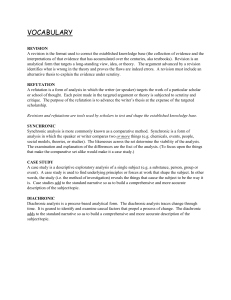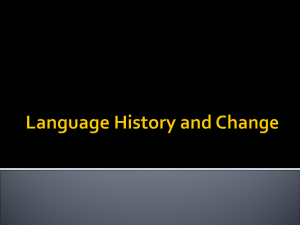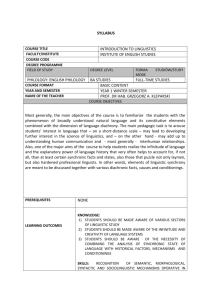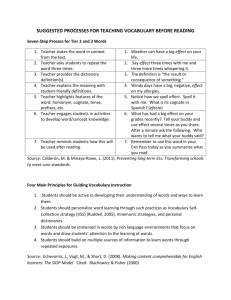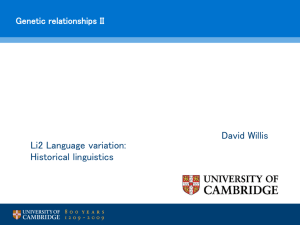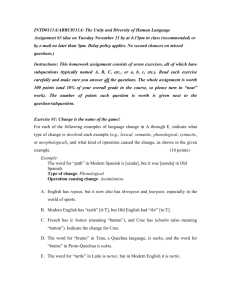Language History and Change
advertisement
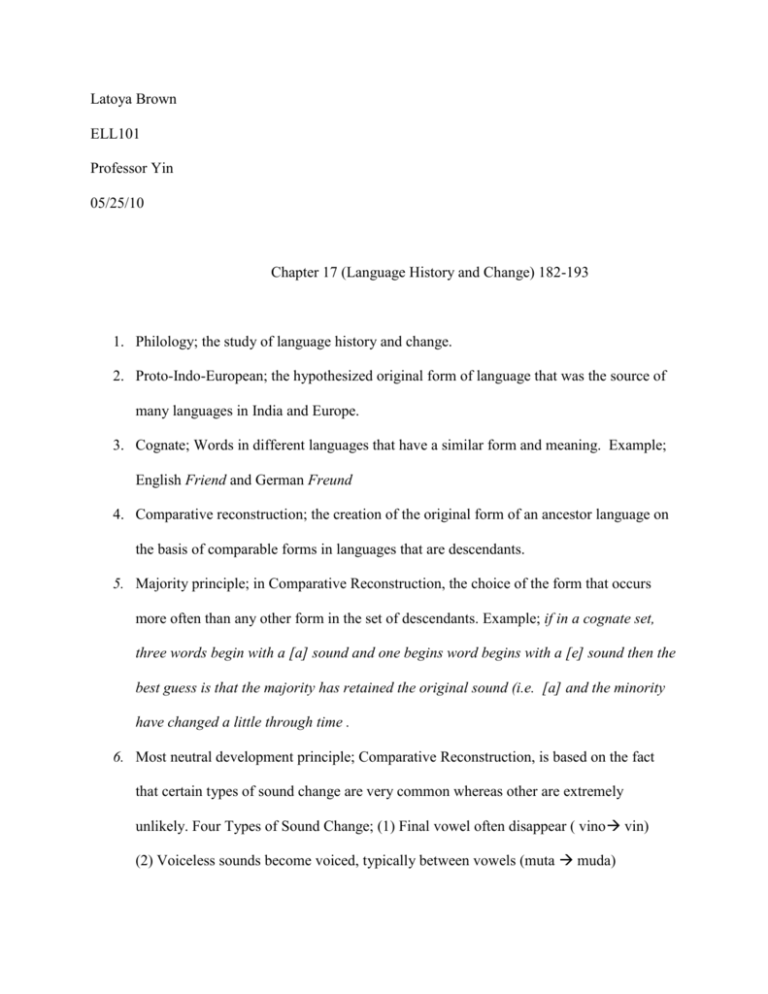
Latoya Brown ELL101 Professor Yin 05/25/10 Chapter 17 (Language History and Change) 182-193 1. Philology; the study of language history and change. 2. Proto-Indo-European; the hypothesized original form of language that was the source of many languages in India and Europe. 3. Cognate; Words in different languages that have a similar form and meaning. Example; English Friend and German Freund 4. Comparative reconstruction; the creation of the original form of an ancestor language on the basis of comparable forms in languages that are descendants. 5. Majority principle; in Comparative Reconstruction, the choice of the form that occurs more often than any other form in the set of descendants. Example; if in a cognate set, three words begin with a [a] sound and one begins word begins with a [e] sound then the best guess is that the majority has retained the original sound (i.e. [a] and the minority have changed a little through time . 6. Most neutral development principle; Comparative Reconstruction, is based on the fact that certain types of sound change are very common whereas other are extremely unlikely. Four Types of Sound Change; (1) Final vowel often disappear ( vino vin) (2) Voiceless sounds become voiced, typically between vowels (muta muda) (3) Stops become fricatives (ripa riva) (4)Consonants become voiceless at the end of words (rizu ris) 7. Old English; the form of English in use before 1100. 8. Middle English; the form of English in use between 1100-1500. 9. External change and Internal Change: External change is the influences from the outside that cause changes in a language; while Internal Change is change in language that is not caused by outside influence. 10. Metathesis; is a sound change involving the reversal of position in two sounds. Examples; hroshorse; fristfirst; bridd bird 11. Epenthesis; a sound change involving the addition of a sound to a word. Examples; timirtimber; spinelspindle. 12. Prosthesis; a sound change involving the addition of a sound to the beginning of a word. Examples; (spirit) Spiritus espiritu ; (school) scholaEscuela 13. Syntactic changes in modern English and old English; (1) in Old English texts, SubjectVerb-Object, is an order most common in Modern English, but a number of different orders can also be found that are no longer used; (2) The use of negatives also differs from Modern English, (3) the loss of a large number of inflectional affixes from many parts of speech 14. Broadening; a semantic change in which a word is used with a more general meaning; Examples; the change from holy day as a religious feast to the very general break from work called a holiday; the change of fodda (fodder of animals) to talk about all kinds of food. 15. Narrowing; a semantic change in which a word is used with a less general meaning; Examples; mete (any of food meat (only animal flesh); hund (used to mean any kind of dog) hound ( now used for a specific type of dog) 16. Diachronic Variation and Synchronic Variation; Diachronic Variation is the differences resulting from change over a period of time; while Synchronic Variation is the differences in language form found in different places at the same time.
